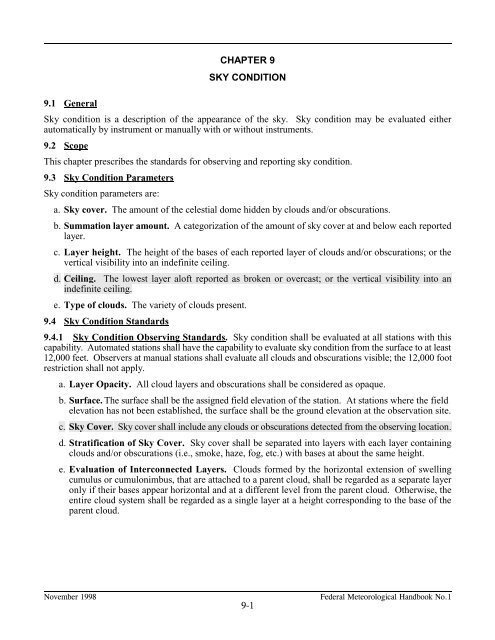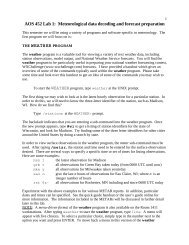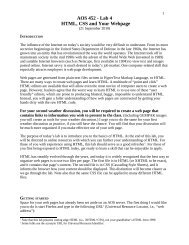Federal Meteorological Handbook No. 1 - Marrella
Federal Meteorological Handbook No. 1 - Marrella
Federal Meteorological Handbook No. 1 - Marrella
Create successful ePaper yourself
Turn your PDF publications into a flip-book with our unique Google optimized e-Paper software.
9.1 General<br />
CHAPTER 9<br />
SKY CONDITION<br />
Sky condition is a description of the appearance of the sky. Sky condition may be evaluated either<br />
automatically by instrument or manually with or without instruments.<br />
9.2 Scope<br />
This chapter prescribes the standards for observing and reporting sky condition.<br />
9.3 Sky Condition Parameters<br />
Sky condition parameters are:<br />
a. Sky cover. The amount of the celestial dome hidden by clouds and/or obscurations.<br />
b. Summation layer amount. A categorization of the amount of sky cover at and below each reported<br />
layer.<br />
c. Layer height. The height of the bases of each reported layer of clouds and/or obscurations; or the<br />
vertical visibility into an indefinite ceiling.<br />
d. Ceiling. The lowest layer aloft reported as broken or overcast; or the vertical visibility into an<br />
indefinite ceiling.<br />
e. Type of clouds. The variety of clouds present.<br />
9.4 Sky Condition Standards<br />
9.4.1 Sky Condition Observing Standards. Sky condition shall be evaluated at all stations with this<br />
capability. Automated stations shall have the capability to evaluate sky condition from the surface to at least<br />
12,000 feet. Observers at manual stations shall evaluate all clouds and obscurations visible; the 12,000 foot<br />
restriction shall not apply.<br />
a. Layer Opacity. All cloud layers and obscurations shall be considered as opaque.<br />
b. Surface. The surface shall be the assigned field elevation of the station. At stations where the field<br />
elevation has not been established, the surface shall be the ground elevation at the observation site.<br />
c. Sky Cover. Sky cover shall include any clouds or obscurations detected from the observing location.<br />
d. Stratification of Sky Cover. Sky cover shall be separated into layers with each layer containing<br />
clouds and/or obscurations (i.e., smoke, haze, fog, etc.) with bases at about the same height.<br />
e. Evaluation of Interconnected Layers. Clouds formed by the horizontal extension of swelling<br />
cumulus or cumulonimbus, that are attached to a parent cloud, shall be regarded as a separate layer<br />
only if their bases appear horizontal and at a different level from the parent cloud. Otherwise, the<br />
entire cloud system shall be regarded as a single layer at a height corresponding to the base of the<br />
parent cloud.<br />
������������� ������������������������������������<br />
���





